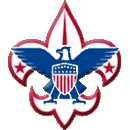| MERIT BADGES |
|
|
|
|
| Note: Eagle Required are in Italics |
"A"
American
Business
American Culture
American Heritage
American Labor
Animal Science
Archaeology
Archery
Architecture
Art
Astronomy
Athletics
Atomic Energy
Auto Mechanics
Aviation
"B"
Backpacking
Basketry
Bird Study
Bugling
"C"
Camping
Canoeing
Chemistry
Cinematography
Citizenship
Community*
Citizenship Nation*
Citizenship World*
Climbing
Coin Collecting
Collections
Communications*
Computers
Cooking
Crime Prevention
Cycling*
"D"
Dentistry
Disability Awareness
Dog Care
Drafting
"E"
Electricity
Electronics
Emergency
Preparedness**
Energy
Engineering
Entrepreneurship
Environmental
Science*
"F"
Family Life*
Farm Mechanics
Fingerprinting
Fire Safety
First Aid*
Fish & Wildlife Mgmt.
Fishing
Fly Fishing
Forestry
"G"
Gardening
Genealogy
Geology
Golf
Graphic Arts
"H"
Hiking
Home Repairs
Horsemanship
"I"
Indian Lore
Insect Studies
"J"
Journalism
"K"
"L"
Landscape Architecture
Law
Leatherwork
Lifesaving**
"M"
Mammal Study
Medicine
Metalwork
Model Design & Building
Motorboating
Music
"N"
Nature
"O"
Oceanography
Orienteering
"P"
Painting
Personal Fitness**
Personal Management*
Pets
Photography
Pioneering
Plant Science
Plumbing
Pottery
Public Health
Public Speaking
Pulp and Paper
"Q"
"R"
Radio
Railroading
Reading
Reptile & Amphibian Study
Rifle Shooting
Rowing
"S"
Safety
Salesmanship
Scholarship
Sculpture
Shotgun Shooting
Skating
Skiing
Small Boat Sailing
Soil & Water
Conservation
Space Exploration
Sports**
Stamp Collecting
Surveying
Swimming**
"T"
Textile
Theatre
Traffic Safety
Truck Transportation
"U"
"V"
Veterinary Medicine
"W"
Water Skiing
Weather
Whitewater
Wilderness Survival
Wood Carving
Woodwork
"X"
"Y"
"Z"
|
|
- Tell the purpose of space exploration including
- historical reason,
- immediate goals in terms of specific knowledge,
- benefits related to Earth resources, technology, and new products.
- Tell about main steps in humanity's movement into space and tell the contributions of these individuals: Jules Verne, K.E. Tsiolkovsky, Robert Goddard, Hermann Oberth, and Werner von Braun.
- Build, launch, and recover a model rocket.
- If local laws prohibit the launching of model rockets, do the following activity: Make a model of a NASA rocket. Explain the functions of the parts. Give the history of the rocket.
Make a second launch to accomplish a specific objective. (Rocket must be built to meet the safety code of the National Association of Rocketry.) Identify and explain the following rocket parts:
- Body tube
- Engine mount
- Fins
- Igniter
- Launch lug
- Nose cone
- Payload
- Recovery system
- Rocket engine
- Discuss and demonstrate each of the following:
- The law of action-reaction
- How rocket engines work
- How satellites stay in orbit
- How satellite pictures of the Earth and pictures of other planets are made and transmitted
- Discuss what has been learned about the Moon and planets by manned and unmanned
spacecraft exploration and the possible benefits of new knowledge. Do TWO of the
following:
- Construct a data table of recent information about the planets. For each planet, give important facts, including distance from the sun, period of revolution, rotation, number of moons, etc.
- Make a scrapbook of magazine photographs and news clippings about planetary research.
- Design a spacecraft that will be sent on a mission to another planet to take samples of its surface and return them to Earth. Name the planet your spacecraft will visit; and, in your design, show how your spacecraft will work and cope with the environment of that plant.
- Describe the purpose and operation of the space shuttle. Discuss the following:
- Main components
- Typical mission profile
- Payloads
- Design and Earth-orbiting space station. Make drawings or a model of your station.
Within your design, consider and plan the following:
- Source of energy
- How it will be constructed
- Life-support systems
- Purpose and function.
- Discuss with your counselor two possible careers in space exploration.
|
||||||
Last Update May 15, 2023

.jpg)

 Space Exploration
Space Exploration